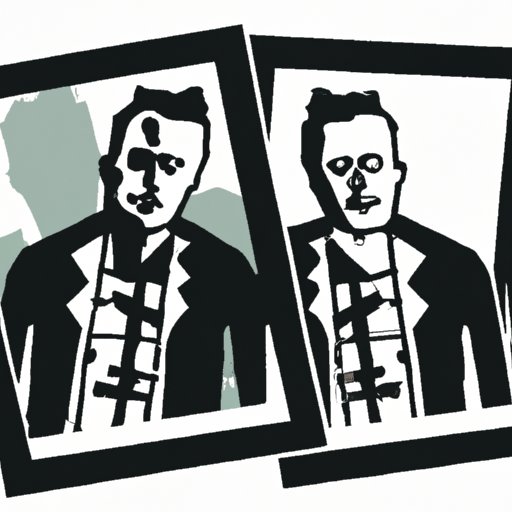
I. Introduction
Have you ever come across an image and wanted to know more about it? Maybe you want to find the original source, find visually similar images, confirm its authenticity, avoid copyright infringement, or even identify unknown objects and people.
That’s where reverse image search comes in. In this article, we’ll explain what reverse image search is, why it’s important to know how to do it, and provide a guide with tips and tricks to make your searches more effective.
II. “The Ultimate Guide to Reverse Image Searching: Tips and Tricks to Find the Original Source”
One of the most common uses for reverse image search is finding the original source of an image. This is especially useful if you want to make sure that you’re not spreading misinformation or using copyrighted material without permission.
There are several search engines that you can use for reverse image searching, including Google, Bing, and TinEye. Each has its own strengths and weaknesses, and it’s worth trying out a few to see which one works best for you.
To conduct a reverse image search, simply upload the image (or enter the URL) into the search bar of your preferred search engine. The search engine will then display results that match or are similar to the image you uploaded.
However, it’s important to note that not all search engine algorithms are created equal when it comes to matching images. Some search engines will prioritize showing visually similar images, while others will prioritize showing sites that have used the same image before. That’s why it’s a good idea to try out multiple search engines to get the most comprehensive results.
If you’re not getting the results you want, try narrowing down your search by adding keywords to the search bar or using advanced search options. You can also try using the search engine’s reverse image search browser extension, which allows you to right-click on an image and conduct a search instantly.
III. “Reverse Image Search 101: A Beginner’s Guide to Finding Visually Similar Images”
Another useful application for reverse image search is finding visually similar images. This is particularly helpful for identifying unknown objects or finding variations of an image that may be more useful to you.
The process for conducting visually similar image searches is very similar to that of finding the original source. Upload or enter the URL of the image you’re interested in, and the search engine will provide results that match or are visually similar to your image.
However, it’s important to note that visually similar image search algorithms are not perfect and can sometimes return irrelevant or inaccurate results. To refine your results, you can try using the search engine’s advanced search options, which may allow you to narrow down your results by color, image size, or style.
IV. “Unmasking Misinformation with Reverse Image Search: How to Confirm the Authenticity of Images”
In today’s age of social media and fake news, it’s more important than ever to confirm the authenticity of images before sharing them. Fortunately, reverse image search can help with this too.
To confirm the authenticity of an image using reverse image search, start by checking the metadata of the image, which may contain information about the date, time, and location the image was taken. You can then use reverse image search to find other instances of the image and see if the context matches the original source.
If you’re still unsure about the authenticity of an image, you can try reaching out to the original source or conducting additional research to corroborate the image’s claims.
V. “Tracking Down the Source: How to Use Reverse Image Search to Avoid Copyright Infringement”
Using someone else’s images without permission can lead to legal trouble, fines, and negative publicity. That’s why it’s important to use reverse image search to find the source of an image and ensure that you have the proper rights to use it.
To use reverse image search for copyright infringement issues, start by uploading or entering the image’s URL into your chosen search engine. The search engine will then provide results that match or are similar to the image you uploaded.
If the image is copyrighted, the search results may include information about the copyright holder and how to obtain permission to use the image. If you’re unable to find the source of the image and suspect that it may be copyrighted, it’s best to err on the side of caution and refrain from using it.
VI. “Solving the Mystery: Using Reverse Image Search to Identify Unknown Objects and People”
Have you ever come across a photo of an unknown object or person and wondered what it was or who they were? Reverse image search can help you solve those mysteries.
To identify unknown objects or people using reverse image search, start by uploading or entering the image’s URL into your preferred search engine. The search engine will then provide results that match or are similar to the image you uploaded.
To refine your search, try using keywords or advanced search options, such as searching for images from a certain time period or geographic location. You can also try using reverse image search on small parts of the image, such as logos or symbols, to see if that leads to more specific results.
VII. Conclusion
In conclusion, reverse image search is a powerful tool that can be used to find the original source of an image, find visually similar images, confirm the authenticity of images, avoid copyright infringement, and identify unknown objects and people. By following the tips and tricks provided in this guide, you’ll be able to conduct more effective reverse image searches and make the most of this valuable tool.
Remember, whether you’re a journalist, social media user, or just someone who wants to learn more about the images they come across online, knowing how to do reverse image search is an essential skill.




